Upgrade Your Downward-Facing Dog with the Gokhale Method and SpineTracker™
Studying and teaching yoga has been part of my life for several years. However, after learning the Gokhale Method, I approached the well-known yoga posture “downward-facing dog” (Adho Mukha Svanasana) in a new way.
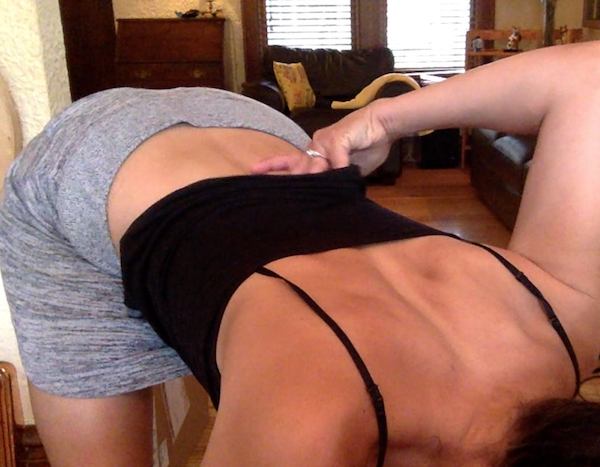
Hip-hinging with my even spinal groove visible — GOOD! Image courtesy Cecily Frederick.
In the Gokhale Method Foundations Course, I learned how to hip-hinge and keep my spine from flexing when bending. I wanted to maintain about the same spinal shape in my “downward-facing dog” pose as I had learned when hip-hinging. This spinal shape, with an even spinal groove from the lower to the upper back, meant that my intervertebral discs, nerve roots and spinal ligaments would be protected during bends, and my hip joints would be used in a healthy way.
Also informing the adjustments I made to my downward-facing dog was receiving detailed feedback about my spinal shape from the new SpineTracker wearable device developed by the Gokhale Method Institute. This technology is available to participants of the new Pop-up Course and in private lessons with participating teachers.
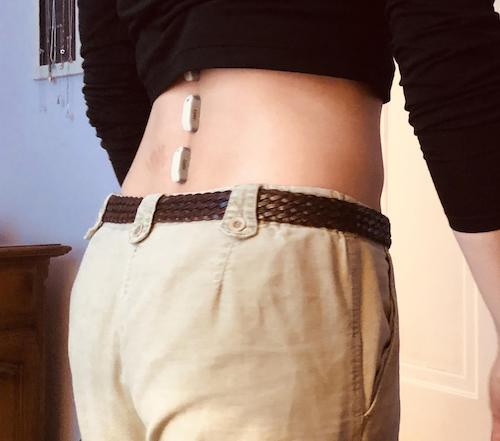
Here, I’m wearing a set of SpineTracker sensors on my back to determine my lumbar spinal shape. Image courtesy Cecily Frederick.
Here is an example of the SpineTracker feedback for a hip-hinge. To contextualize, each dot is the location of a sensor.
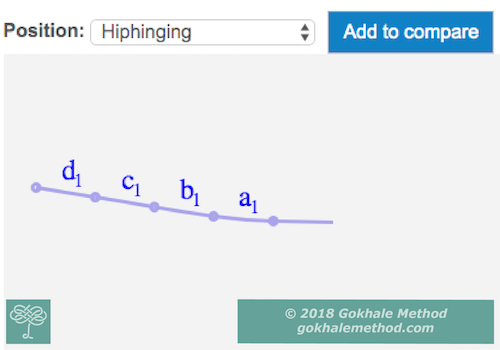
SpineTracker snapshot of my spinal shape while hip-hinging — GOOD!
Although many yoga practitioners hip-hinge in their “downward-facing dog” posture, I had a habit of slightly flexing my lumbar spine in this pose.
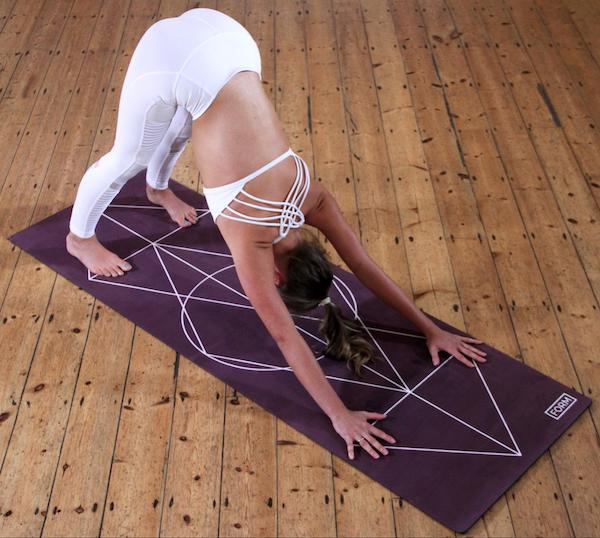
The practitioner in this version of "downward-facing dog" pose shows a slightly flexed lumbar spine, putting the lumbar discs under strain. Image courtesy Form on Unsplash.
After many years of spinal flexion occurring with most hip flexion, I had developed chronic low back pain. Not all spinal flexion is easy to see (or feel internally), as my former downward-facing dog form, demonstrated below, shows.
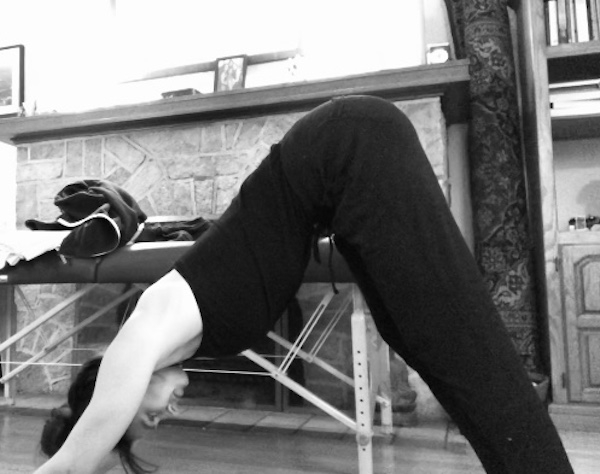
Here I am in downward-facing dog with some lumbar spine flexion and hip flexion (knees straight, heels down) — BAD! Image courtesy Cecily Frederick.
To heal my irritated back, I began revisiting the way I approached this yoga posture. It was a worthy project since this pose shows up frequently in my yoga practice and yoga teaching sessions.
First, I needed to learn how to stabilize my overly mobile lower back and ease into deeper flexion in my hips. Luckily, hip-hinging practice had helped me learn how to achieve both of these goals. Then I needed to transfer this skill to one common yoga pose: downward-facing dog.
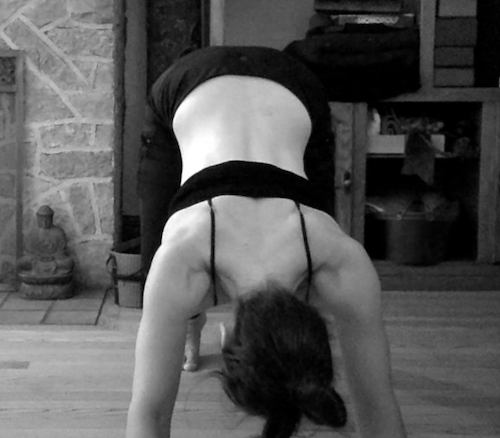
In this photo, I’m in downward-facing dog with my spinal groove visible (knees bent, heels up) — GOOD! Image courtesy Cecily Frederick.
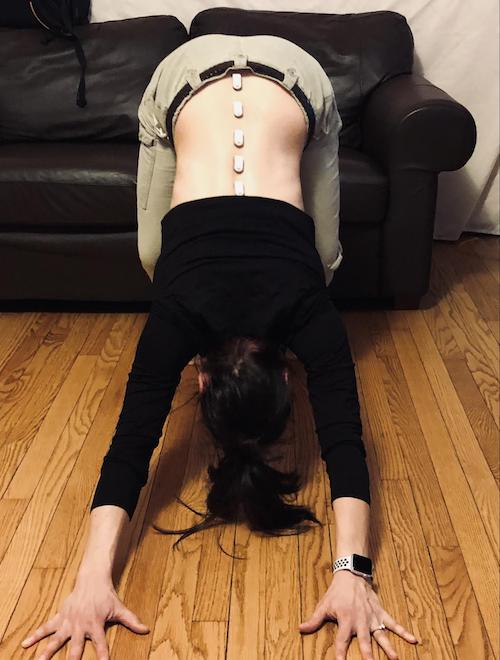
Here’s another view of my downward-facing dog, wearing the SpineTracker sensors on my back (knees bent, heels up) — GOOD! Image courtesy Cecily Frederick.
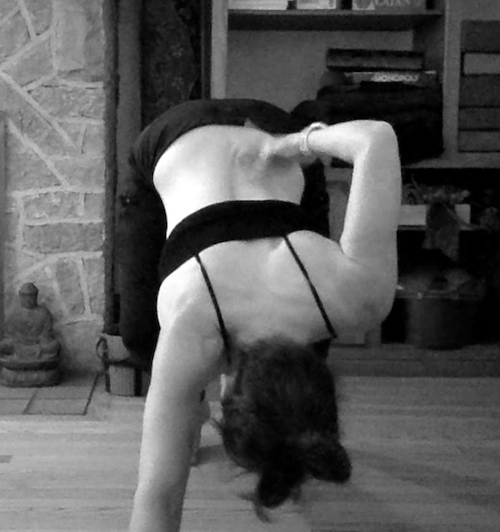
The upgraded downward-facing dog pose creates an even spinal groove which I’m able to feel with my fingertips — GOOD! Image courtesy Cecily Frederick.
A great way to capture the shape of the spine in a complex yoga pose is to take an image with the SpineTracker device. The SpineTracker sensors stick directly to the skin over the spine and are able to give detailed information about the spine’s shape (and your hands can stay on the floor).
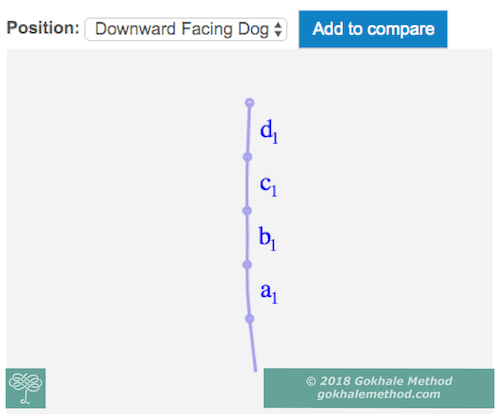
SpineTracker snapshot of my spinal shape in upgraded downward-facing dog (knees bent, heels up), more spinal extension — GOOD!
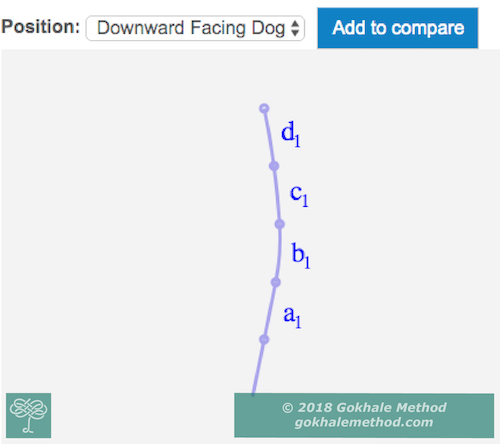
For comparison, this SpineTracker snapshot of my spinal shape in unmodified downward-facing dog (knees straight, heels down) reveals noticeably more spinal flexion than in the upgraded form — BAD!
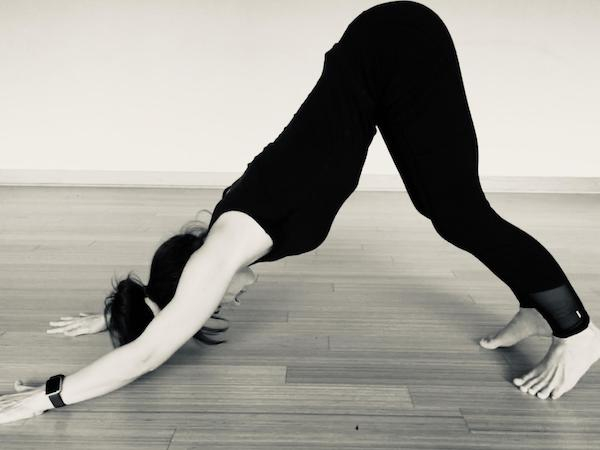
In my upgraded downward-facing dog pose: no spinal flexion, heels up, knees bent — GOOD! Image courtesy Cecily Frederick.
To refine my downward-facing dog pose, I needed to:
- Learn how to hip-hinge from a Gokhale Method teacher
- Come to a hands and knees position (“dog pose”) with a J-spine
- Lift hips into downward-facing dog position without changing spinal shape and gently pull hips back, away from hands
Things that might also help if you have shortened hamstrings and calf muscles and/or internally rotated femurs:
- Keep knees softly bent and kidney bean shape the feet to allow the pelvis to settle well
- De-emphasize dropping heels to the floor
- Allow the pose to feel awkward at first (but not painful)
One additional advantage to structuring a downward-facing dog this way is that the pose becomes a great way to lengthen the entire spine, which can make other yoga poses healthier and more accessible. Yoga is one of many topics addressed in the Online University content for alumni.
Is there a yoga pose that causes you some back discomfort?

Comments
Can we get profile photos
Can we get profile photos side-by-side so we can see what is meant by more or less spinal flexion? I don't have access to a teacher where I live, so I require spoonfeeding in order to understand.
Hi Jannebarn, We understand
Hi Jannebarn,
We understand that it's challenging to get all the relevant details and pictures through a blog post. The good news is that all of the Gokhale Method Teachers are available for private one-on-one appointments online via Skype or Zoom. Although in-person instruction is ideal, private appointments translate very well to the online format.
All the best,
Jacob/Customer Support
I had the same question as
I had the same question as Jannebarn. Can you at least explain whether back flexion means that you have a sway back or does it mean that your back is curved out, ie slightly tucked pelvis. Its really hard to tell from the photos.
Thanks,
Helen
Back flexion means the
Back flexion means the opposite of sway - it means curved outwards / convex. It can indeed be hard for untrained eyes to tell the difference but it's really easy for the discs to tell. These subtle differences are not at all subtle for the discs, the spinal nerves, and the myriad other structures around the spine.
Sway back is also not
Sway back is also not Anterior Pelvic Tilt. I have the latter and not the former. Pelvic tilt is actually the antidode!
Caveat: via strengthening the correct muscles, not forcing the movement.
GiGong has a lot of moves to gently unglue the hip-spine-SI joint area, I just can't afford retreats. (nor Gokhale training...I'd LOVE to get my hands on those spine trackers!!)
Body work had a lot of art and practitioner insight than straight science!
Add New Comment
Login to add commment
Login